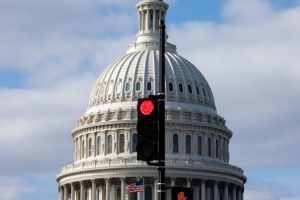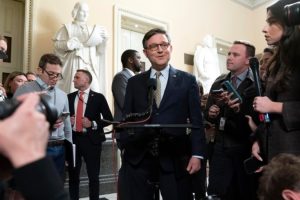This October 30, Brazilians return to the polls to choose in the second round who will be president from January 1 and for the following four years. Historical polarization and few points of difference in the polls mark a final stretch full of uncertainty.
A campaign fought to the point of confusion has characterized the second round of the presidential elections in Brazil.
156.6 million citizens choose this Sunday from 08:00, Brasilia time, between its current president, the ultraconservative Jair Bolsonaro, and who was between 2003 and 2011 the president of the Latin American giant, the leftist leader Luiz Inácio ‘Lula da Silva. On this day, 12 states will also choose their governors and deputy governors, but their eyes are on the dispute between the two heavyweights of Brazilian politics, who were only five percentage points apart in the first round, with Bolsonaro stepping on near his contender.
The following four weeks have become an intense battle for both candidates to conquer both among the supporters of their rivals and those who do not lean towards one or the other. And it is that the adoration they receive from their bases is almost as palpable as the rejection towards both. According to a recent datafolha survey49% of the electorate will mobilize for ‘Lula’ and 44% for Bolsonaro.
The rejection of ‘Lula’ is largely due to mistrust of his Workers’ Party, which is blamed for corruption scandals such as the Lava Jato case. While Bolsonaro is reproached for an incendiary, misogynistic, sexist speech with authoritarian overtones, which has questioned Congress, the Judiciary and the Electoral System.

His detractors also reject that he has promoted the use of firearms and promoted the deforestation of the Amazon – which also had high rates during the term of ‘Lula’ – in favor of sectors such as agribusiness and illegal mining, as well as its management. of the pandemic, which kept Brazil’s hospitals beyond collapse for months.
Uncertainty and vote fishing mark the elections
The country’s main pollsters crashed into reality after giving Lula up to 12 points ahead of Bolsonaro in the first round. And things tighten. The most recent Datafolha poll forecasts Lula with 53% of the support in valid votes, while Bolsonaro rose to 47%. With a narrow difference, both have carried out a fierce campaign in various areas of the country, but with an eye on regions such as the southeast, strategic because it is the most populated.
In the sprint In the end, apart from maintaining his usual discourse based on family values promoted by a good part of the evangelical Church, the president has turned to seducing the impoverished classes, historically related to ‘Lula’. And he has done it by reaching out to the state apparatus, promoting promises such as raising the minimum wage above inflation or expanding social subsidies such as Aid Brazil, which allocates about 114 dollars a month to more than 20 million citizens in poverty.

The measure, which was not part of the campaign of Bolsonaro – who criticized his predecessors Dilma Rousseff and ‘Lula’ da Silva for similar initiatives – has been widely questioned. Even the Public Ministry asked for the subsidy to be canceled after Attorney Lucas Furtado warned of signs of pursuing an “electoral objective” and that this puts the state coffers at risk. To extend it – a promise that ‘Lula’ also coins – the budget is exceeded and there are no guarantees that it can be kept for next year. Whoever wins, its implementation raises serious questions at a time when the country is experiencing an acute poverty crisis, with more than 33 million people starving in the nation.
In the midst of this panorama, there are doubts about who the less favored classes will vote for. Also if they will be able to do it, since Bolsonarist allies, such as the mayor of São Paulo, Ricardo Nunes, say that will not provide public transport to those who need it during the day, even though the Supreme Court ordered local governments to do so. This would mean isolating many ‘Lula’ voters, generally grouped in marginal and peripheral areas.
‘Lula’, meanwhile, has sought to get closer to young people. According to the Ipec institutethis is the sector that is most prone to the leftist, but it is also the most volatile according to the pollster and the one that could change its opinion more easily regarding its election.

And he has tried to conquer the evangelical vote. The leftist has met with various Church leaders, to whom he has assured that he will guarantee freedom of worship and expressed his “rejection against abortion”, in a desperate attempt to dispute the evangelical vote of his rival. The religious community brings together no more and no less than a third of the 213 million Brazilians in the country and in recent years has rallied around the ultra-conservative.
The crossfire intensifies on social media
The campaign has also been marked by cross attacks. The far-rightist and his allies have repeated at will that a left-wing presidency would bring waves of crime and economic ruin, as well as the legalization of abortion and the closure of churches, which ‘Lula’ assures is not true. Amid this rhetoric, the Electoral Tribunal banned some comments referring to Lula as a “thief” and the “chief of a criminal organization” in the media.
Both also threw themselves into the mud on social networks, where the ‘Lula’ campaign has even come to suggest accusations of cannibalism and pedophilia by Bolsonaro and “a pact with the devil” by ‘Lula’ from his adversary’s campaign . The proliferation of messages of this type on digital platforms was described as “a disaster” by the Electoral Court, which had to expand its powers to massively eliminate the fake news of the network.

But despite the attacks, face-to-face meetings have been limited, after ‘Lula’ decided not to attend a second debate against his adversary, which multiplied the meetings alone with the press, or that both leaders have attended to long interviews such as the one conducted with Lula in the Flow podcast or with Bolsonaro in the Limited Intelligence space. On Friday, October 28, both faced each other on the private channel ‘O Globo’, where they once again crossed attacks due to corruption and the management of the current president.
The election is also being held under some tension, after Bolsonaro exposed his repeated doubts about the country’s electoral system days before the second round, which he has launched – without evidence – into questioning in recent years. In the midst of the heightened polarization, the specter that the ultraconservative and his sympathizers will not accept a possible victory for ‘Lula’ has hovered over the country in recent months, especially after Bolsonaro has made massively flexible with decrees the carrying of weapons and I have made this a personal mark.
As a guarantee of transparency, the Electoral Court reported the presence of eight national and seven international observation organizations for the second round, among which will be the Organization of American States and the Mercosur Parliament. Meanwhile, he called for the mobilization of the Federal Force, which will be in 561 locations in 11 states of the country, in search of sealing security.

For the day, 472,075 polling stations located in the 5,570 municipalities of the nation and in 181 cities abroad are enabled. And what will be “the second round of the largest elections ever held in the 90 years of existence of the Electoral Justice,” according to the Superior Electoral Court itself, will have a total of 1.8 million workers.
Brazilians must attend this mandatory election for those between 18 and 70 years old, under penalty of paying a mule of 3.51 reais, about 0.6 dollars. People who cannot read, citizens aged 16 and 17, or those over 70 are not required to go to the polls.
The closing of the polls is scheduled for 5:00 p.m., Brasilia time, and the results will begin to be given from then on, with a definitive figure expected around 8:00 p.m. Whoever wins, will face the coming years not only as a divided country, but also with record levels of poverty, a hunger situation that has regressed to 1990 levels, and global challenges, such as the conservation of an Amazon increasingly devastated by deforestation.






![[Img #74683]](https://thelatestnews.world/wp-content/uploads/2024/12/The-main-mistakes-to-avoid-when-betting-on-electronic-sports-150x150.jpg)







